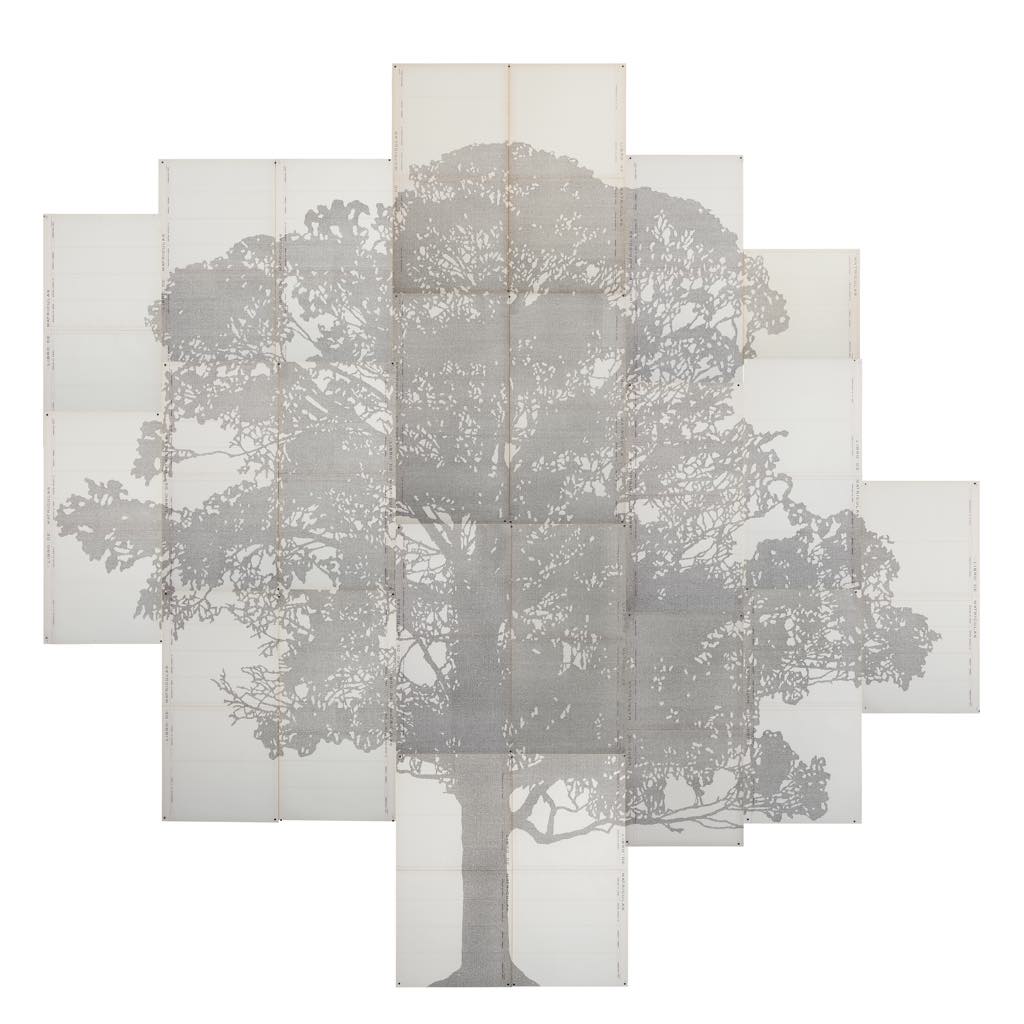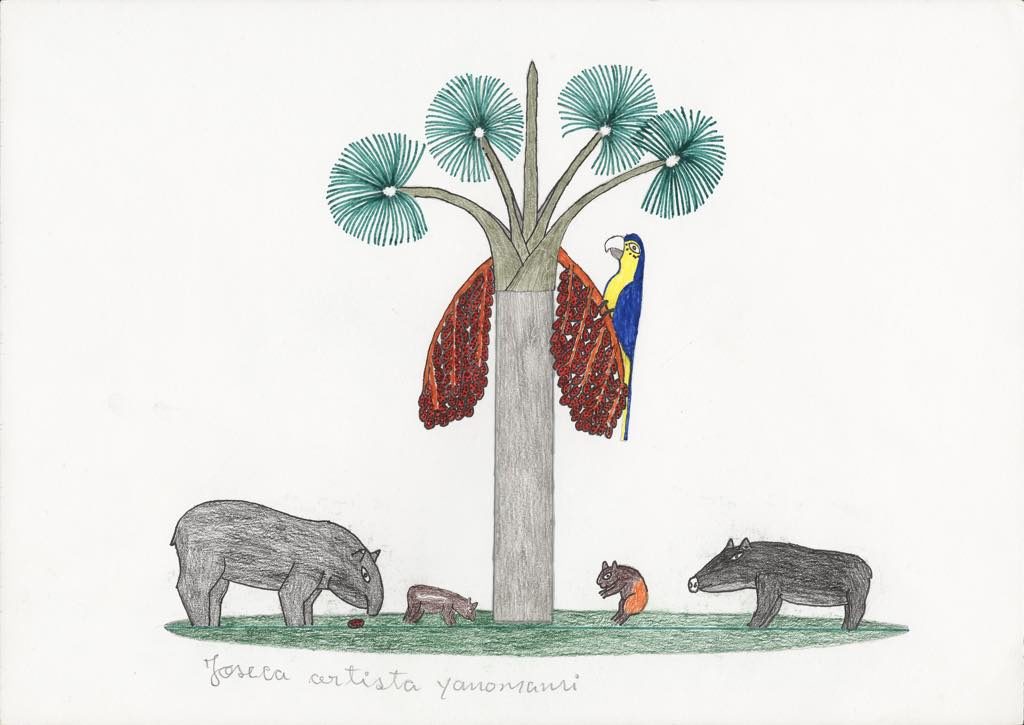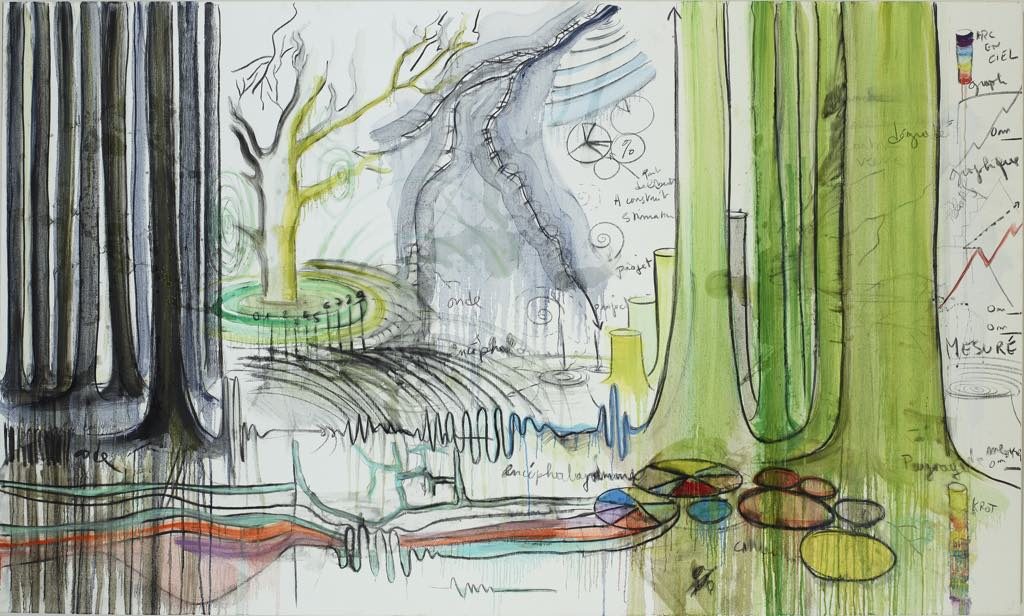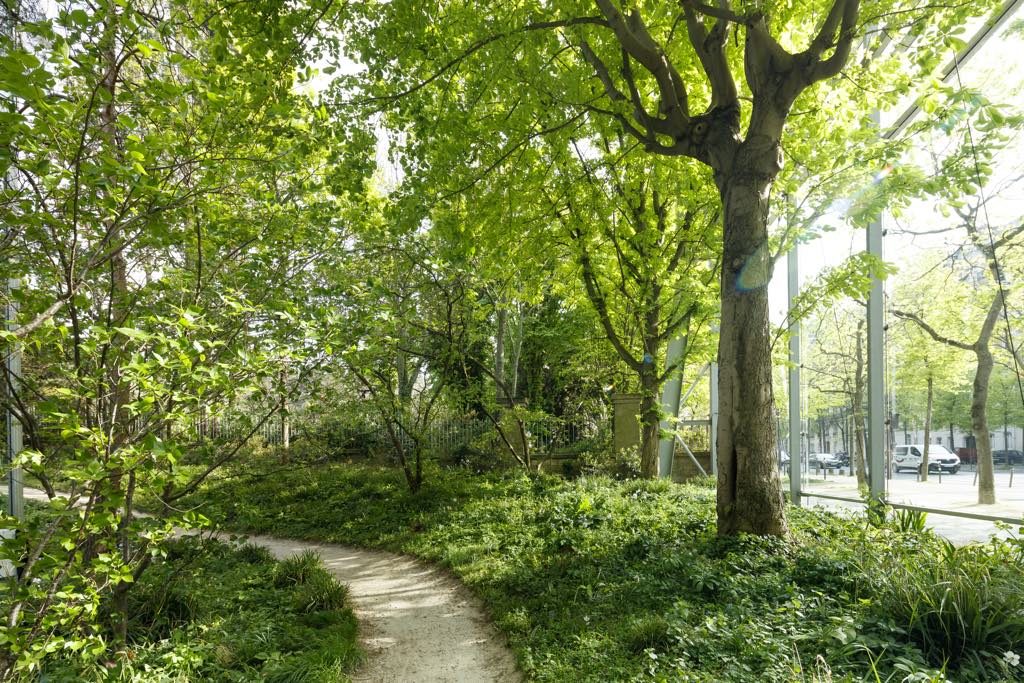
Trees are trending at the moment, with new discoveries about their ability to communicate with and help each other and even other species, and their importance to the environment the subjects of many publications. In any case, everyone loves trees, so as soon as I heard that the Fondation Cartier was holding the exhibition “Nous les Arbres” (“Trees”), I was dying to go, and I wasn’t the only one.
The foundation’s exhibitions often go beyond art for art’s sake to encompass philosophical, sociological, scientific and environmental issues, and this show is no exception. Its goal, according to the curators, is to reveal the “beauty and biological complexity of these large protagonists of the living world,” whose very existence is now threatened, and to recognize the vital role they play in our world.
The main exhibition room on the ground floor, with its high ceilings and floor-to-ceiling windows, is filled with works by various artists. I was particularly struck by the decorative, almost abstract large-format monotypes by Brazilian artist Luiz Zerbini, which evoke the jungle, mostly in black and white, with splashes of color.

I also loved the “naive” paintings by three Yanomami artists who live in the Amazon forest and by a group of Paraguayan artists who live in the Gran Chaco region.
In the other ground-floor gallery, a documentary film by Raymond Depardon and Claudine Nougaret consists of interviews with people from different places about their favorite tree and why they love it.
One wall is covered with crudely sculpted wooden ex-votos of various body parts, seen as “a metaphorical transition between flesh and wood,” while a series of primitive-looking tools made by another Brazilian artist, Afonso Tostes, are supposed to evoke human bones and tree branches to express the connection between humans and trees.
I enjoyed Fabrice Hyber’s paintings of our friends the trees in which he tries to project himself inside the tree he is painting and illustrate some of the recent scientific discoveries about them.
Downstairs are more artworks, along with a video installation by DILLER SCOFIDIO + RENFRO on deforestation.
This is a lovely, informative exhibition that definitely deserves to be seen, but it didn’t really satisfy my obsession with trees. I kept thinking of the joy I once felt, which was somehow missing here, on seeing John Constable’s beautiful painting “Study of the Trunk of an Elm Tree” (c. 1821).
Real-tree lovers who want their kicks should linger in the foundation’s lovely garden to commune with and even hug some real trees, 24 of them, to be exact, whose names are provided in the booklet accompanying the exhibition. Sensors have been attached to two of the trees to plot their activity. Take special notice of the giant cedar of Lebanon in front of the gallery’s entrance, which was planted in 1823 by none other than Chateaubriand.
A handful of artworks are also scattered around the garden, including two installations by the recently deceased Agnès Varda, whose wry humor always comes through even when she is mourning a lost loved one (in these two cases, pet cats).
Favorite


Lovely report! Wish I could see the show.
Meanwhile, Constable’s painting is superb indeed. I kept looking at it because the representational work was so good, I couldn’t imagine that it wasn’t a photograph.